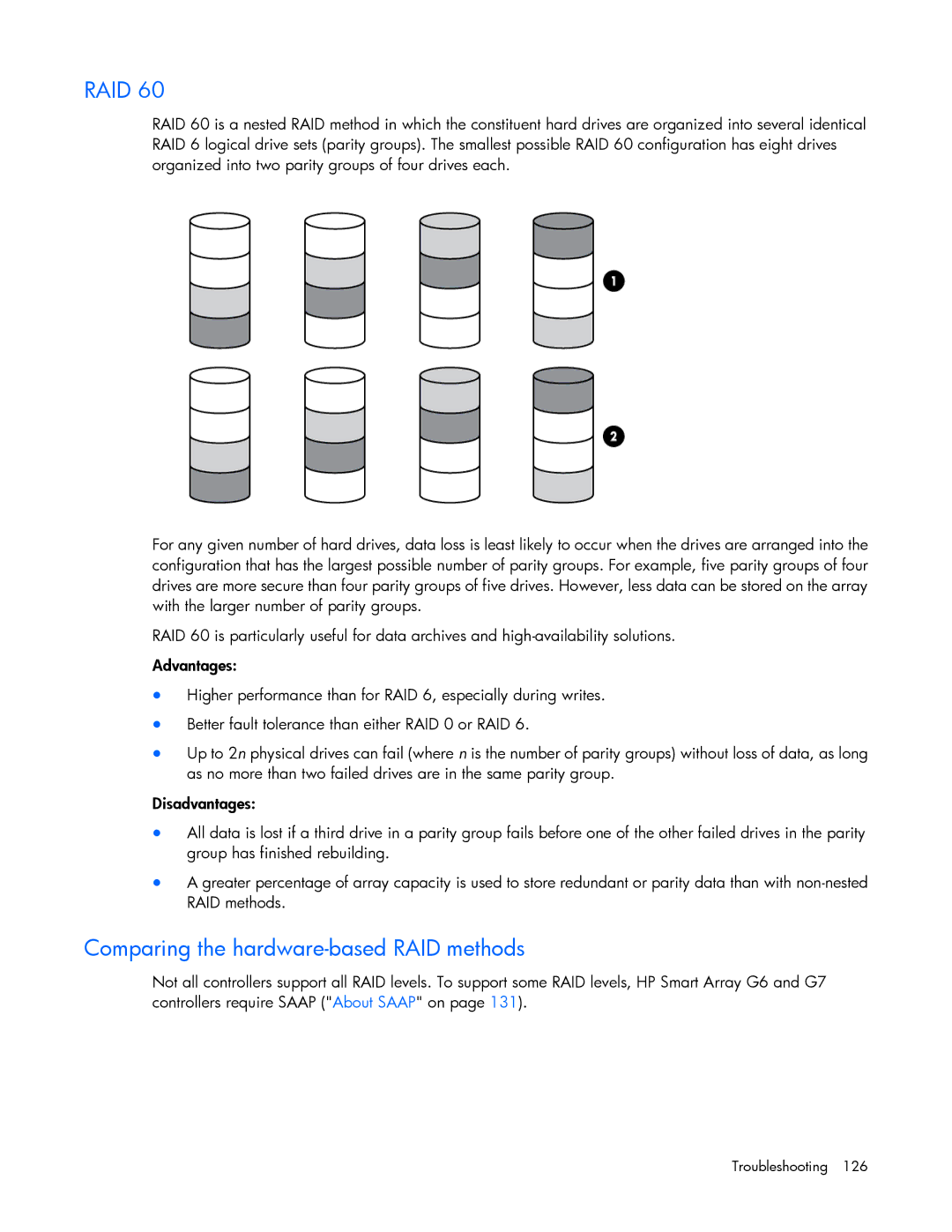
RAID 60
RAID 60 is a nested RAID method in which the constituent hard drives are organized into several identical RAID 6 logical drive sets (parity groups). The smallest possible RAID 60 configuration has eight drives organized into two parity groups of four drives each.
For any given number of hard drives, data loss is least likely to occur when the drives are arranged into the configuration that has the largest possible number of parity groups. For example, five parity groups of four drives are more secure than four parity groups of five drives. However, less data can be stored on the array with the larger number of parity groups.
RAID 60 is particularly useful for data archives and
Advantages:
•Higher performance than for RAID 6, especially during writes.
•Better fault tolerance than either RAID 0 or RAID 6.
•Up to 2n physical drives can fail (where n is the number of parity groups) without loss of data, as long as no more than two failed drives are in the same parity group.
Disadvantages:
•All data is lost if a third drive in a parity group fails before one of the other failed drives in the parity group has finished rebuilding.
•A greater percentage of array capacity is used to store redundant or parity data than with
Comparing the hardware-based RAID methods
Not all controllers support all RAID levels. To support some RAID levels, HP Smart Array G6 and G7 controllers require SAAP ("About SAAP" on page 131).
